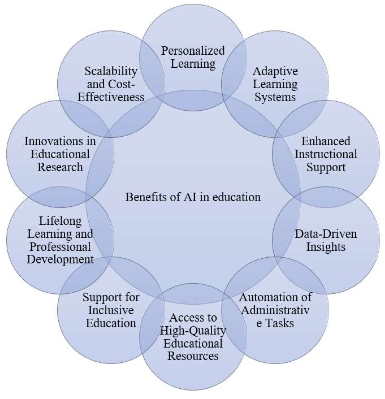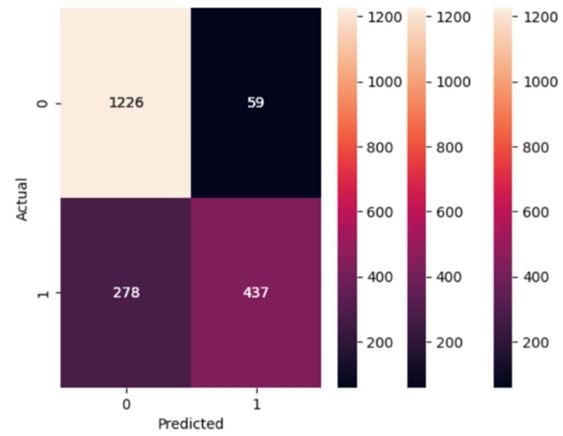Learning recovery post-COVID-19 in Ohio’s Appalachian communities: A multivariate causal-comparative investigation
Abstract
This study investigates causal-comparative relationships between COVID-19 learning loss in reading and math for 3rd grade through 8th grade students and Appalachian status of schools across Ohio. This study further explored potential differences in learning recovery for Appalachian and non-Appalachian schools and potential factors that may impact recovery. Archival data was collected from the Ohio Department of Education and Workforce to support analysis of differences in average proficiency on Ohio State Testing results. The initial investigation occurred without adjustment or differentiation for socio-economic status, operationalized as eligibility for free or reduced-price lunch, and was then adjusted by this variable for enhanced analysis. The study analyzed additional information about Educational Services Center delivery models for interventions and staff support. The analysis revealed no significant difference in learning loss between Appalachian and non-Appalachian schools, although Appalachian schools demonstrated more negative decline on average over the study period. The study revealed statistically significant gains in reading in an Appalachian County with an Educational Service Center that utilizes a direct service delivery model for professional development and emphasizes targeted interventions. No significant gains were made in math from this same county. The analysis supports the need for future research into service model approaches and their potential impact on preventing learning loss and aiding in learning recovery.
References
[1]UNESCO. Education: From COVID-19 school closures to recovery. Available online: https://www.unesco.org/en/covid-19/education-response (accessed on 2 October 2024).
[2]OECD. Available online: https://web-archive.oecd.org/2023-12-15/580005-covid-19.htm (accessed on 2 October 2024).
[3]Di Pietro G, Biagi F, Dinis Mota Da Costa P, et al. The likely impact of COVID-19 on education: reflections based on the existing literature and recent international datasets. Publications Office of the European Union; 2020.
[4]Dorn E, Hancock B, Sarakatsannis J, & Viruleg E. COVID-19 and student learning in the United States: The hurt could last a lifetime. McKinsey & Company. 2020; 1: 1–9.
[5]Gee KA, Asmundson V, Vang T. Educational impacts of the COVID-19 pandemic in the United States: Inequities by race, ethnicity, and socioeconomic status. Current Opinion in Psychology. 2023; 52: 101643. doi: 10.1016/j.copsyc.2023.101643
[6]Wyse AE, Stickney EM, Butz D, et al. The Potential Impact of COVID‐19 on Student Learning and How Schools Can Respond. Educational Measurement: Issues and Practice. 2020; 39(3): 60–64. doi: 10.1111/emip.12357
[7]Haliwa I, Layman H, Coffman J, et al. Perceptions and Expectations of School-Based Professionals Surrounding School-Based Mindfulness Training in Appalachia During the COVID-19 Pandemic: A Qualitative Study. Frontiers in Public Health. 2022; 10. doi: 10.3389/fpubh.2022.816494
[8]McFayden TC, Breaux R, Bertollo JR, et al. COVID-19 remote learning experiences of youth with neurodevelopmental disorders in rural Appalachia. Journal of Rural Mental Health. 2021; 45(2): 72–85. doi: 10.1037/rmh0000171
[9]Stover K, Cowley K, Gaunt G, et al. Comparison of on-campus and virtual self-assessment outcomes for incoming Appalachian STEM undergraduates’ first research experience. Online Learning. 2024; 28(1). doi: 10.24059/olj.v28i1.3834
[10]Nicola T, Gable A, & Ash J. The response of rural districts to the COVID-19 pandemic. National Center for Rural Education Research Networks; 2020.
[11]Pordell P, Ali H, Martinez GM, et al. COVID-19 Prevention Facilitators and Barriers among Specific Ethnic Minority Communities in Rural Ohio. Available online: https://www.medrxiv.org/content/10.1101/2021.10.21.21265302v1.full (accessed on 2 October 2024).
[12]Karchmer-Klein R, Konishi H. A mixed-methods study of novice teachers’ technology integration: Do they leverage their TPACK knowledge once entering the profession? Journal of Research on Technology in Education. 2021; 55(3): 490–506. doi: 10.1080/15391523.2021.1976328
[13]Zucker TA, Oh Y, Conradi Smith K, et al. Low-Income Elementary Students Access to Books & Reading Motivation. Reading Psychology. 2022; 43(3–4): 250–276. doi: 10.1080/02702711.2022.2094040
[14]Marchessault JK, Larwin KH. The Potential Impact of Structured Read-Aloud on Middle School Reading Achievement. International Journal of Evaluation and Research in Education (IJERE). 2014; 3(3). doi: 10.11591/ijere.v3i3.6463
[15]Larsen L, Helland MS, Holt T. The impact of school closure and social isolation on children in vulnerable families during COVID-19: a focus on children’s reactions. European Child & Adolescent Psychiatry. 2021; 31(8): 1–11. doi: 10.1007/s00787-021-01758-x
[16]Reuge N, Jenkins R, Brossard M, et al. Education response to COVID 19 pandemic, a special issue proposed by UNICEF: Editorial review. International Journal of Educational Development. 2021; 87: 102485. doi: 10.1016/j.ijedudev.2021.102485
[17]Karalis T. Planning and evaluation during educational disruption: Lessons learned from the COVID-19 pandemic for treatment of emergencies in education. European Journal of Education Studies. 2020; 7(4).
[18]Darling-Hammond L, Schachner A, & Edgerton AK. Restarting and reinventing school: Learning in the time of COVID and beyond. Learning Policy Institute; 2020.
[19]Papadakis S, Kiv A, Kravtsov H, et al. Unlocking the Power of Synergy: The Joint Force of Cloud Technologies and Augmented Reality in Education. In: Proceedings of the 10th Workshop on Cloud Technologies in Education (CTE 2021) and 5th International Workshop on Augmented Reality in Education (AREdu 2022); 23 May 2022; Kryvyi Rih, Ukraine.
[20]ESSER. Elementary and Secondary School Emergency Relief (ESSER) Fund. Available online: https://www.ed.gov/grants-and-programs/formula-grants/response-formula-grants/covid-19-emergency-relief-grants/elementary-and-secondary-school-emergency-relief-fund (accessed on October 2024).
[21]Educational Commission. 50-State Comparison: State K-3 Policies. Available online: https://www.ecs.org/50-state-comparison-state-k-3-policies-2023/#:~:text=16%20states%20and%20the%20District%20of%20Columbia%20require%20grade%20retention,determined%20at%20the%20local%20level (accessed on 2 October 2024).
[22]Fordham. Available online: https://www.ohiobythenumbers.com/#school-options (accessed on 2 October 2024).
[23]U.S. Department of Education. Elementary and Secondary School Emergency Relief (ESSER) Fund. U.S. Department of Education; 2021.
[24]Brock M. Re-conceptualizing secondary literacy: Impacts of 21st-century literacy interventions on STEM high school student achievement [PhD thesis]. Youngstown State University; 2021.
[25]Alejo A, Jenkins R, Yao H. Learning losses during the COVID-19 pandemic: Understanding and addressing increased learning disparities. Future in Educational Research. 2023; 2(1): 16–29. doi: 10.1002/fer3.21
[26]Spiteri J, Deguara J, Muscat T, et al. The impact of COVID-19 on children’s learning: a rapid review. Educational and Developmental Psychologist. 2022; 40(1): 5–17. doi: 10.1080/20590776.2021.2024759
[27]Seale J. It’s not all doom and gloom: What the pandemic has taught us about digitally inclusive practices that support people with learning disabilities to access and use technologies. British Journal of Learning Disabilities. 2022; 51(2): 218–228. doi: 10.1111/bld.12497
[28]Cavanaugh C, DeWeese A. Understanding the professional learning and support needs of educators during the initial weeks of pandemic school closures through search terms and content use. Journal on Empowering Teaching Excellence. 2020; 28(2): 233–238.
[29]Sims K. Lessons Learned from Education Initiatives Implemented During the First Wave of COVID-19: A Literature Review. Institute of Development Studies (IDS); 2021. doi: 10.19088/k4d.2021.134
Copyright (c) 2025 Author(s)

This work is licensed under a Creative Commons Attribution 4.0 International License.









